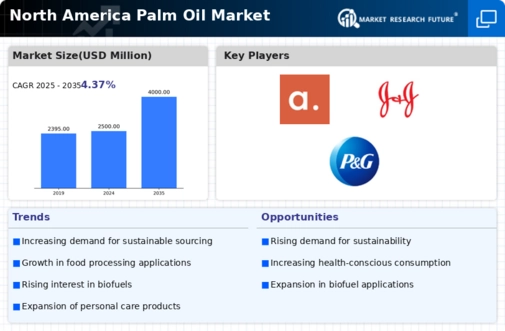The North America Palm Oil Market is characterized by a dynamic competitive landscape influenced by various factors including sustainability concerns, regulatory frameworks, and consumer preferences. In recent years, there has been a growing emphasis on ethically sourced palm oil, driving companies to innovate and adapt their offerings. The market has seen entry from both global players and local enterprises seeking to capitalize on the rising demand for palm oil, which is increasingly utilized in food processing, cosmetics, and biofuels.
As the market evolves, participants are focusing on building strategic partnerships, enhancing distribution networks, and investing in research and development to strengthen their positions within this competitive arena. Furthermore, challenges such as public perception regarding palm oil and its environmental impact necessitate a comprehensive approach to marketing, product development, and corporate responsibility.BASF, as a significant player in the North America Palm Oil Market, has established a foothold through its commitment to sustainability and innovation. The company’s strengths lie in its extensive research capabilities and a robust product portfolio that offers functional solutions across various industries.
BASF focuses on developing sustainable palm oil derivatives that meet the increasing demand for environmentally friendly products. Its strategic initiatives include collaborating with suppliers to ensure responsible sourcing and actively participating in industry coalitions that promote sustainable practices. The company’s strong brand reputation and customer relationships enhance its competitive edge, allowing BASF to maintain a substantial presence in the North American palm oil sector.Greentrade is another prominent player in the North America Palm Oil Market, recognized for its focus on providing sustainable and certified palm oil products.
The company specializes in trading and supplying various palm oil products that cater to food manufacturers and other industries looking for ethically sourced materials. Greentrade's strengths are anchored in its commitment to transparency and traceability, which resonates well with the increasing consumer demand for sustainable options. The company has effectively positioned itself in the market by leveraging its expertise in supply chain management and fostering strong partnerships with producers committed to sustainability.
Recent strategic initiatives, including mergers and acquisitions, have further expanded Greentrade's market presence, enabling it to enhance its product offerings and services in the region, ultimately contributing to a more sustainable palm oil industry in North America.














Leave a Comment